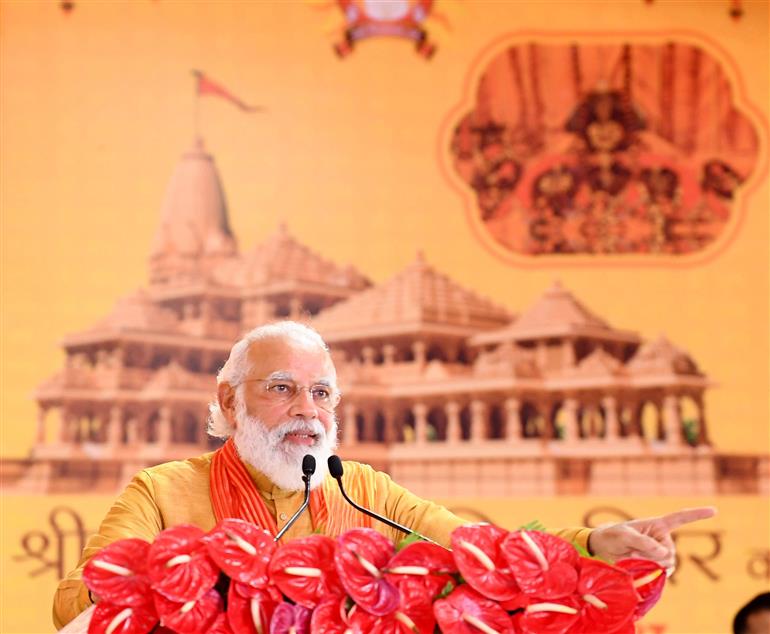For anyone following the United States presidential election, one theme is all-too-present: almost no one is satisfied, let alone happy, with their options.
Despite having exactly the same candidates, the tone of the 2024 election could not be more different from that of 2020. While the 2020 electorate may have been widely unhappy, they were also exceedingly impassioned. Voters were galvanized and excited by the prospect of political action following a long four years hallmarked by COVID-19, lockdowns, and economic recession. The primary season was relatively long and fiercely competitive–it was not until June 5th that Joe Biden secured enough delegates to receive his party’s nomination. Even following Biden’s nomination, those who were not excited about him as a candidate showed immense passion for the electoral process, coining the slogan “Settle for Biden” in an effort to excite the apprehensive. The resulting 2020 election not only boasted the highest voter turnout ever for a US election (by sheer numbers): but more importantly, 2020 resulted in the highest percentage of eligible voter turnout since 1900. Once the polls closed, the results took days to count, with constant controversy and tensions running high. Even after the election was called, emotion on the right continued to escalate until its climax on January 6th, 2021, when rioters breached the United States Capitol. The entire affair demonstrated a feverish (and at times destructive) engagement with the political system.
However, thus far, the 2024 election is looking very different.
This election season appears to be in a league of its own. After four years as president, Joe Biden will again be the Democratic Party’s nominee. He is widely perceived to be the archetype of an establishment politician, having been in the public eye as a dominant figure in the American system since the 1980s. Voters are concerned about his age and tenure, and recent foreign policy mishandlings in Gaza are turning large swaths of voters against him. Simultaneously, Donald Trump somehow remains considered an insurgent candidate and has regained the Republican nomination for the third time, despite already having served one term as president. As election day approaches, he continues to be immersed in scandals over hush money and rape allegations. As the campaign drags on, individuals nationwide are voicing the opinion that they do not like either candidate, and there is widespread shock that these are the best two candidates the electoral system is capable of producing. This is demonstrated by voters voicing their discontent by voting “uncommitted” in large numbers during the primaries: people everywhere are looking for a third-party candidate to support. This level of disillusionment and dejection seems unprecedented.
When trying to understand the 2024 election, the case of 2020 seems almost entirely useless. The only similarity the two elections appear to share is the candidates. Passion has been replaced by fatigue, hope with dejection, and excitement with frustration. No nominee presents the possibility of a new future, and the election appears to be merely a choice between a return to 2016 or a return to 2020. As a result, many in the media have been struggling to use 2020 as an applicable comparison for 2024, as both seem completely unprecedented in entirely different ways. Nevertheless, there is another recent election that may prove more useful in helping us understand the electoral landscape of 2024.
The year is 2016. Off the back of eight years of the Obama administration, another Democrat establishment rises to prominence. Benghazi and perceived foreign policy mishandlings by Hilary Clinton fill the news, as insurgent candidate Donald Trump is immersed in scandals over hush money and rape allegations. As the campaign drags on, many start voicing the opinion that this election is one for the better of two evils, finding neither candidate suitable for the highest office. There is shock that these are the best two candidates the system could produce. A poll comes out stating that a quarter of millennials would prefer a giant meteor strike to either party’s candidate assuming office, prompting a brief campaign for “Giant Meteor: Just End it Already.” The subsequent election has lower turnout than the previous three elections, with large numbers of uncommitted voters choosing to stay home. Exit polls show Trump with the worst pre-election disapproval rating of all time (61%), with Clinton clinching the second-worst pre-election disapproval rating of all time (51%). Disillusionment and dejection are at record highs.
Double-Haters
The electoral landscapes of 2016 and 2024 are shockingly similar. Both of these elections are hallmarked by a considerable public perception that both candidates are/were deeply flawed, corrupt, inadequate, or simply undesirable for the office of president. This has led to the political phenomenon of voters being increasingly termed “double-haters.” Double-haters, or voters who express severe disdain for both candidates, make following an election exceedingly difficult as voting intentions can be all but impossible to gauge within the group. Therefore, at any given moment, there is remarkable uncertainty regarding public opinion and each candidate’s success. However, several lessons from 2016 may help in understanding the current campaign season.
1. Polling doesn’t necessarily show the whole picture.
Famously, the 2016 US election ran headfirst into the limits of polling. Almost every major poll in the runup to the election had Clinton in the lead by at least a few percentage points. Within the US electoral college system, presidential elections can be decided on exceedingly slim margins (by a matter of several thousand strategically placed votes in the cases of 2000 and 2020), so a lead of multiple percentage points is generally a positive sign for a hopeful candidate. In most cases, Clinton’s lead before the election was outside of the predicted margin of error, increasing expectations of her victory.
Graph via FiveThirtyEight
However, as history tells us, there were other factors at play within the 2016 election that made polling unreliable.
One oft-cited reason is the existence of “silent” or “hidden” Trump voters. These are individuals who were reluctant to share their intentions to vote for Trump with pollsters, resulting in a vast undercounting of his support. It is possible that within the 2024 context, this type of voter exists for Biden. As shown in places like Michigan, Democratic voters were more than prepared to vote for “uncommitted” over Biden in order to express their frustration with his policies regarding Gaza. It is voters like these that may respond to pollsters saying they will not vote for Biden, yet may still turn out for him over Trump come November. Therefore, it may be unwise to place too much stock in current poll numbers, as they may not accurately reflect what voters intend to do in November.
However, there is a much larger threat to both candidates within this election that could also prove the polls to be unreliable: turnout.
2. Turnout is everything.
Whilst not unique to the 2016 and 2020 campaigns, turnout will prove critical to the results of the election in November. Contrary to the 2020 election, 2016 boasted the lowest turnout percentage since 2000. While the overall change in voter turnout was minimal from 2012 to 2016, a crucial difference came in what particular groups did not turn out to the polls.
Graph via the United States Census Bureau
As seen in the chart above, from the 2012 election to the 2016 election, there was a significant drop in turnout among Black voters. As the Black community within the United States has long been a stronghold of Democratic power, this specific demographic slip likely played into Clinton’s failure to win key swing states in 2016. In Joe Biden’s successful 2020 campaign, he engaged extensively with the Black community to turn out voters, helping secure his win via this key voting bloc. Over recent months, there has been evidence that the Democratic Party is holding onto the voting bloc of ethnic minorities within the United States less tightly than it historically has. This raises immense problems for President Joe Biden: if this bloc chooses to stay home, as many did in 2016, he may lose key swing states such as Georgia. Similarly, if Trump hopes to finally win the popular vote in a presidential contest, he must hold firmly onto non-college-educated white voters, as this has historically been his strongest demographic. Trump has even less room to lose voters than Biden, as he has yet to gain a victory in a presidential popular vote, meaning turnout is of critical importance to his campaign as well.
Furthermore, Pew Research has found that those who did not vote in 2016, but did vote in 2018, were far more likely to vote for Biden (62%) than Trump (36%) in 2020. This suggests that large numbers of Democratic voters decided to stay home in 2016, perhaps due to a dislike for both candidates or perhaps due to overconfidence in a Clinton victory due to the polling data. This puts Biden at risk in another election fueled by double-haters. It would be wise for the Biden campaign to remind Democratic voters of the 2016 election and the potential ramifications of sitting out the election, even if they do not like him as a candidate.
3. Following a Democratic administration, Democratic candidates may prove less scandal-resistant than Republican candidates.
Throughout the 2016 campaign season, many were asking the same question: which scandal will be the final straw for Trump? The answer never seemed to come. Even with the Access Hollywood tapes, rape allegations, financial questions, racist and xenophobic comments, and countless other missteps and blunders, Trump’s base never seemed to waver in their support of him. Meanwhile, Clinton’s campaign drowned in anger regarding her email server, discussions of Benghazi, and controversy about the Clinton Foundation. A Gallup poll released in September 2016 stated that, when asked about what they had read, heard, or seen related to Trump, voters responded with speeches and campaign messages. However, for Clinton, a vast majority recalled a single word: “emails”. While the answers regarding Trump ebbed and flowed throughout the campaign, Clinton’s emails seldom fell from the number one spot.
If 2016 is any kind of proxy for 2024, then the Biden campaign may have a significantly harder time digging themselves out from perceived wrongdoings in the eyes of their voters than the Trump campaign will. Despite Trump spending the majority of the campaign thus far flitting in and out of court, his favorability has been increasing in polling. Without the recent memory of him in office, as was present in 2020, Trump appears to have once again become scandal-proof, leaving this election to be a referendum on the Biden Administration and Joe Biden himself.
The adage “Democrats fall in love, Republicans fall in line” has once again become salient. While in an election of so many double-haters, it will be difficult to predict how voters will behave when placed in the ballot box, Trump has profoundly benefitted from the loyalty of his base.
Conclusion
Despite what we can learn from 2016, there are still many unknowns regarding the 2024 election. The Biden campaign and the DNC have significantly outraised the Trump campaign and the RNC, and money is a strong correlate of success. Furthermore, Trump’s hush-money trial has been announced for April 14th, placing him under more scrutiny from the public eye. On the other hand, frustration with Biden’s handling of Gaza is reaching new levels as voters increasingly speak out, and members of his administration are beginning to resign. In tandem, Biden’s age continues to be of concern to many (although potentially slightly assuaged by the recent State of the Union). With seven months left in the campaign, there is still a large amount of time left for spirits to change. However, if history is not learned from, it may be doomed to repeat.
By Freya Blackmore
Cover Image Source: Flickr photo Trump & Biden shared by Emma Kaden, originally by Gage Skidmore via CC BY-SA 2.0 DEED






